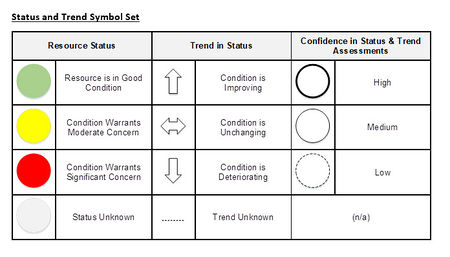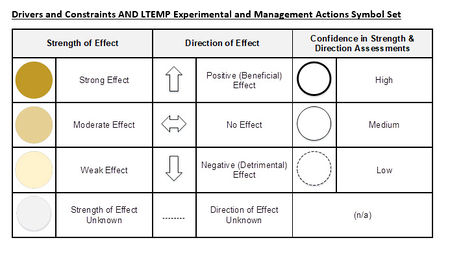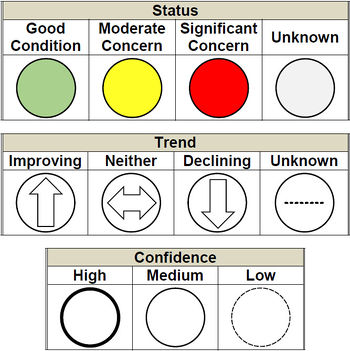2017 Knowledge Assessment
|
|
2017 Knowledge Assessment (KA)The FY 2017 KA had three objectives:
The resulting information provides crucial guidance for work planning and budgeting. The TWG also conceived the FY 2017 KA as a trial with two additional objectives:
The present (FY 2017) knowledge assessment is timed to coincide with and inform the Annual Reporting process and development of the next GCDAMP Triennial Work Plan for FY 2018-2020. This knowledge assessment is testing a methodology for better organizing, displaying, and communicating its findings, potentially to carry forward to guide future knowledge assessments as well. [1] |
| -- |
-- |
-- |
|---|
Status and TrendsHow closely does the condition of the resource currently approach management objectives and, if the current condition shows any trend, is this a trend toward or away from management objectives? Drivers and ConstraintsWhat environmental factors, including human actions and basic dam operations, most strongly affect resource status and trend, how strong are these effects, and do these effects constrain or drive resource condition toward or away from management objectives? Effects of LTEMP Experimental and Management ActionsWhich LTEMP experimental and management actions are expected to affect resource condition and trend, how strong are these effects expected to be, and are these effects expected to drive resource condition toward or away from management objectives? LTEMP Experimental and Management Actions
|
|




